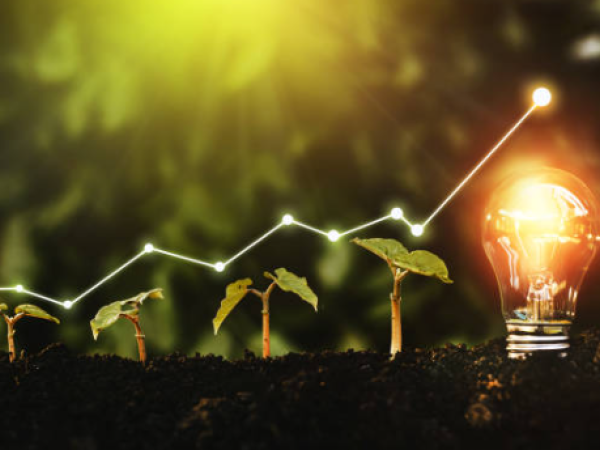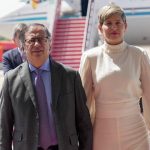In the growth of the Colombian economy in the second quarter of the year, the performance of the agricultural sector once again showed one of the greatest contributions within the variation. According to data from Dane Agriculture, livestock, hunting, forestry and fishing increased by 10.2%, contributing $15.1 billion to the country’s GDP.
(Read: Brazilian productivity displaces Colombian livestock exports)
Although the results are positive, the actors in the sector reiterate that The current situation of international prices for inputs and raw materials with a downward trend is what is benefiting the country’s agriculture. and they add that clear policies are needed to sustain the economic dynamics of the sector in Colombia.
In detail, the Dane recorded that Coffee crops were the ones that drove the growth of the sector, since only in the annual rate they showed an increase of 25%, In the second quarter, the total amount of exports was $1.2 billion. The positive dynamics of livestock also boosted the result with a rate of 6.5% and a contribution of $3.8 billion from April to June.
(Read more: Get ready: La Niña phenomenon could intensify rainfall in the last quarter of 2024)
Likewise, temporary crops, permanent crops, plant propagation, activities supporting agriculture and livestock, and post-harvest, mixed exploitation (agricultural and livestock) and ordinary hunting and hunting through traps and related service activities. achieved an annual rate of 10.9%, contributing $8.9 trillion to the country’s economy in the second quarter.
According to Jorge Bedoya, president of the Colombian Farmers’ Society (SAC), the performance of the agricultural economy is a response to the reduction in the cost of inputs in the international market, both for agriculture and for the livestock sector.Between January and June, the price of fertilizers fell by more than 9% and the cost of concentrated feed by 7.2%.“, he stressed.
(See: Fenalce warns of a decrease in planted area and uncontrolled imports)
Additionally, he stated that both the production of chicken, eggs and pork, which showed positive results, They come with a certain anticipation because they have longer cultivation cycles.so the supply dynamics in the agricultural sector are explained more by this type of phenomena.
“It has a lot to do with what has been happening in the past, rather than with a particular situation,” he said.
Coffee
iStock
Another point raised by the president of the association is the behavior and benefit of the climate for some of the crops. In this sense, coffee production has been favored by this factor, due to the lower cost of fertilization and the support provided by the National Federation of Coffee Growers in technical assistancesituations that translate into better performance.
(See: Petro explains how his proposal to implement forced investments would work)
For his part, the former Minister of Agriculture, Andrés Valencia, highlighted that the growth of the agricultural GDP during the second quarter was due especially to coffee production, “where government support for this sector has been minimal”.
And it is precisely the good performance of the grain that, according to experts, is driving the country’s economy. For this reason, the former Minister of Agriculture, Cecilia López, highlighted that both coffee and livestock They are two lines that have been surrounded by a “negative attitude on the part of the Government”.
(Read more: Agricultural growth, more due to external factors than productivity)
“Growth will continue because the frosts in Brazil are always a great opportunity, much to the chagrin, for Colombian coffee growers to get a big boost. It is very interesting to see that the sector that has pushed the most is precisely the one that has not been the target of the Ministry of Agriculture’s policy.“, Lopez said.

Agricultural GDP
iStock
La Niña phenomenon is latent
One of the concerns that arise regarding the sustainability of agricultural growth is that, according to estimates by Upra and Ideam, The La Niña phenomenon will intensify in the last quarter, which is why the Government’s measures and policies in this area are urgently needed.
(See also: Government begins a cycle of talks with the dairy and rice sectors)
Maintaining the good results, says Cecilia López, will depend on the behavior and intensity of the climatic phenomenon, because the country knows that it is very vulnerable due to the lack of tools that allow for a system to manage floods, excessive rainfall, etc.
“I don’t see a clear policy on how to deal with things that are structural problems, areas that are constantly flooded, where the rain destroys and we haven’t done anything. These are the adaptation policies that should be very strong, especially now that the issue of climate change is on the agenda, but it is something that remains in a discourse.“, he noted.
For his part, Bedoya explained that The economy and growth of the rest of the sectors need to be stablesince the health of food producers depends solely on consumption.
(Read: Petro government’s land management has not achieved the proposed goals)
“We need household consumption in Colombia and exports to remain healthy. Two, we need input and credit costs to remain stable or to have a downward trend, which allows for lower costs, so that the business is profitable and therefore we can continue investing. And three, we depend on what happens with the climate.“argued the president of the SAC.

Cattle raising
iStock
Livestock farming, contradictory
Although the overall growth of livestock farming showed a positive result, the actors in this sector maintain that there are some contradictions, not in the data, but in the market. According to Oscar Cubillos, director of Planning and Economic Studies at Fedegán, The bovine sector grew by 4.4% thanks to the slight increase in cattle slaughter.
(See: ADR to finance projects to replace illicit coca plantations with food)
“This year, the price of meat has risen very little, less than 1%, which has boosted consumption again, not to the levels we would like, but at least it is not negative. This ends up driving the slaughter of animals.“, said.
However, he stressed that in the case of milk, which increased by nearly 6.4% in volume in the quarter, there has been an improvement in production, a situation that does not benefit the sector due to the dairy crisis in producer prices that they are facing.
(Read more: Supersociedades assures that there is no irregularity with Monómeros)
“Milk production has been growing due to a more favorable climate for pastures, which translates into more milk. But precisely this extra milk has caused producer prices to fall and unfortunately consumer prices are not falling.“he concluded.

















